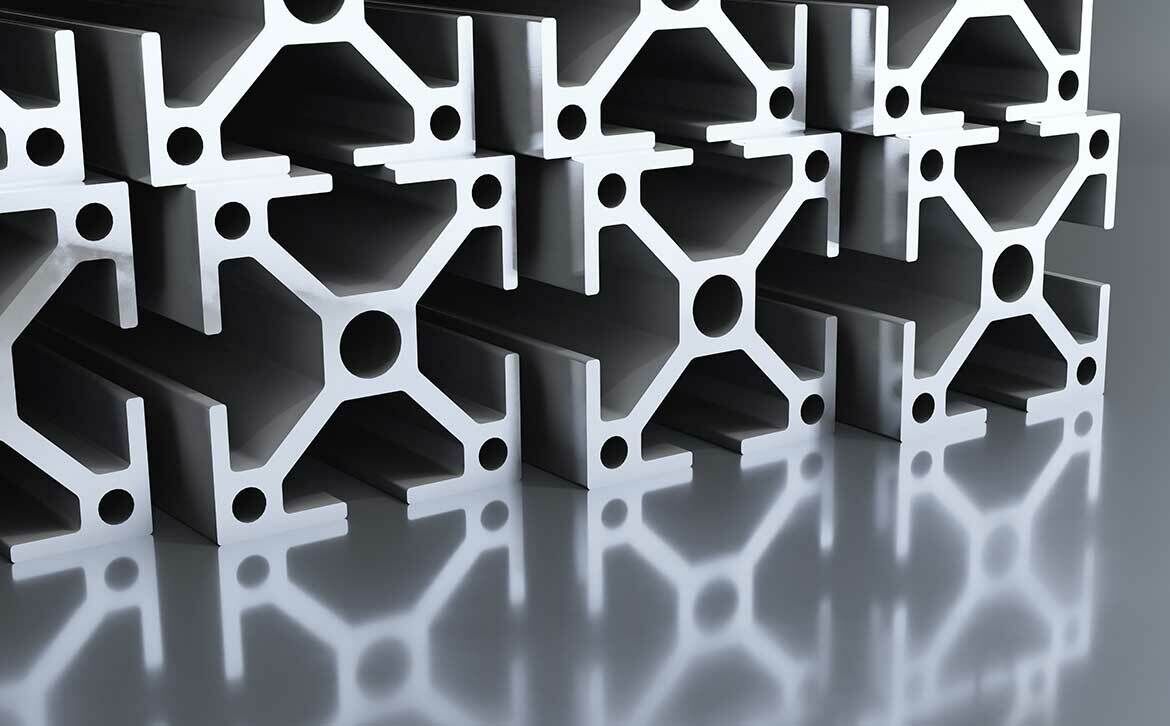
Aluminum extrusion

Aluminum extrusion technology, extrusion is an industrial forming process with constant cutting for the production of long aluminum profiles. Aluminum cylindrical bars are heated and pressed through bars with one or more holes to produce a cross-section profile. Aluminum profiles are most often produced by direct extrusion. Each workpiece is heated to between 375°C and 500°C before loading, depending on the alloy from which the workpiece is made. The shape of the hole determines the shape of the extruded profile. The process of aluminum extrusion profiles continues until 10-15% of the workpiece remains in the container. The rest of the aluminum extrusion profiles are sent to waste for recycling. The total length of the product after the aluminum profile extrusion can be 40 meters or more.
Aluminum profiles extrusion
Aluminum extrusion is a process that involves pushing a metallic aluminum material through a cylinder (die) with a specific cross-section. The aluminum profiles look like an expanded component of about the same thickness as the hole in the aluminum matrix․ Extruded aluminum profiles are used in a variety of sectors including electronics, automotive, and public transportation (trailers and recreational vehicles are examples of vehicles that use aluminum profiles), bridge decks, renewable energy, and telecommunications, among other applications such as industries where work stations, inspection tables, and carts are examples of industrial use. Aluminum profile heat treatment is another technological stage when the alloy acquires new properties. Aluminum profile aging is also performed at different temperatures and periods, during which the material's hardness increases.
Aluminum profiles form
Why production by extrusion? With the right design, the force required for extrusion drops, material flows at the same rate in every area in the mold, and aluminum extrusion errors caused by the mold are eliminated. It is in a critical place in the name of energy saving, labor, and raw material design. The mold production and extruded aluminum profiles cost much more economical than the mold production used in other metal or polymer production methods. The product passes through a special aluminum profile form, as a result, it gets the look you need.
our Brochure


